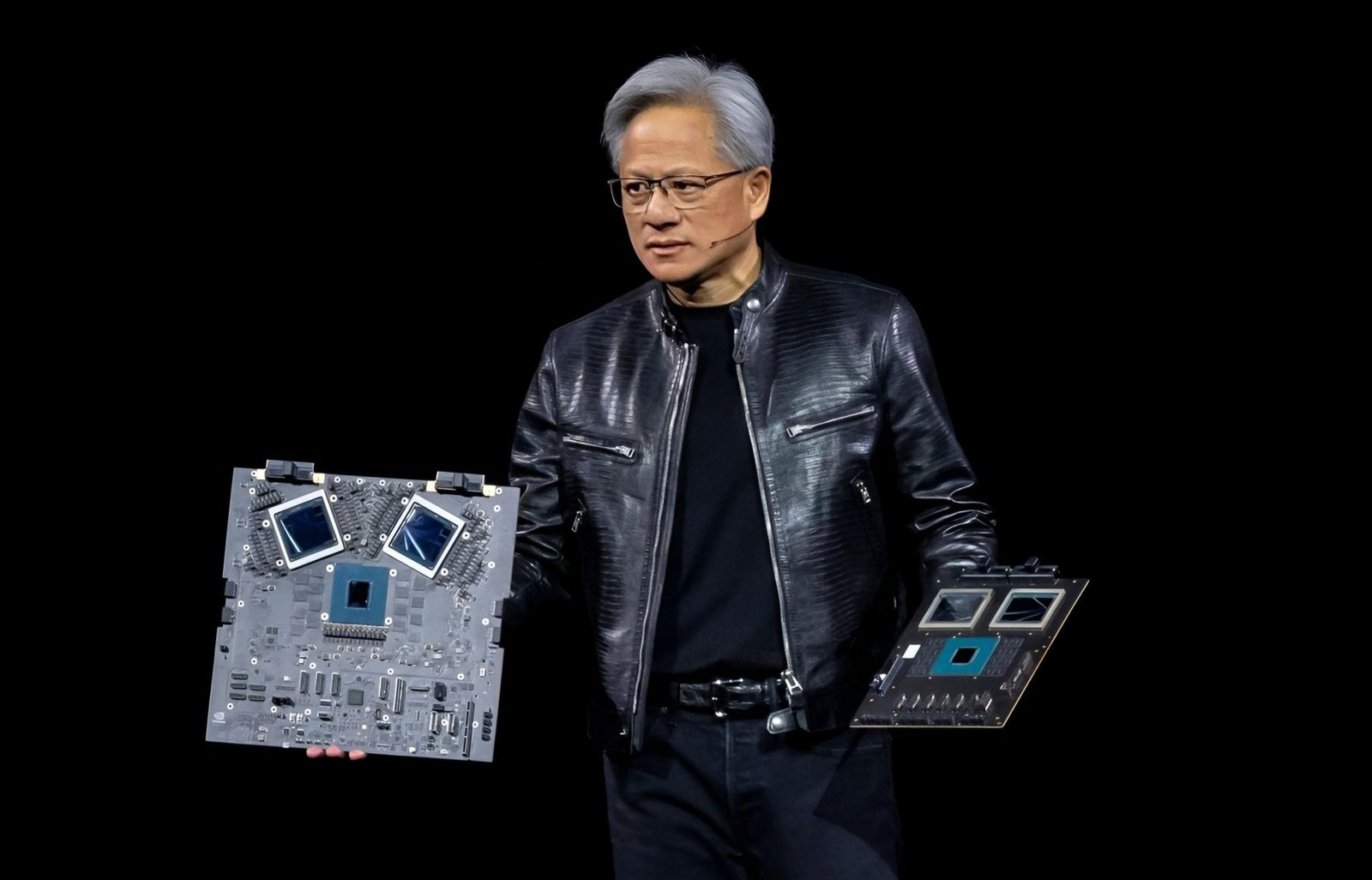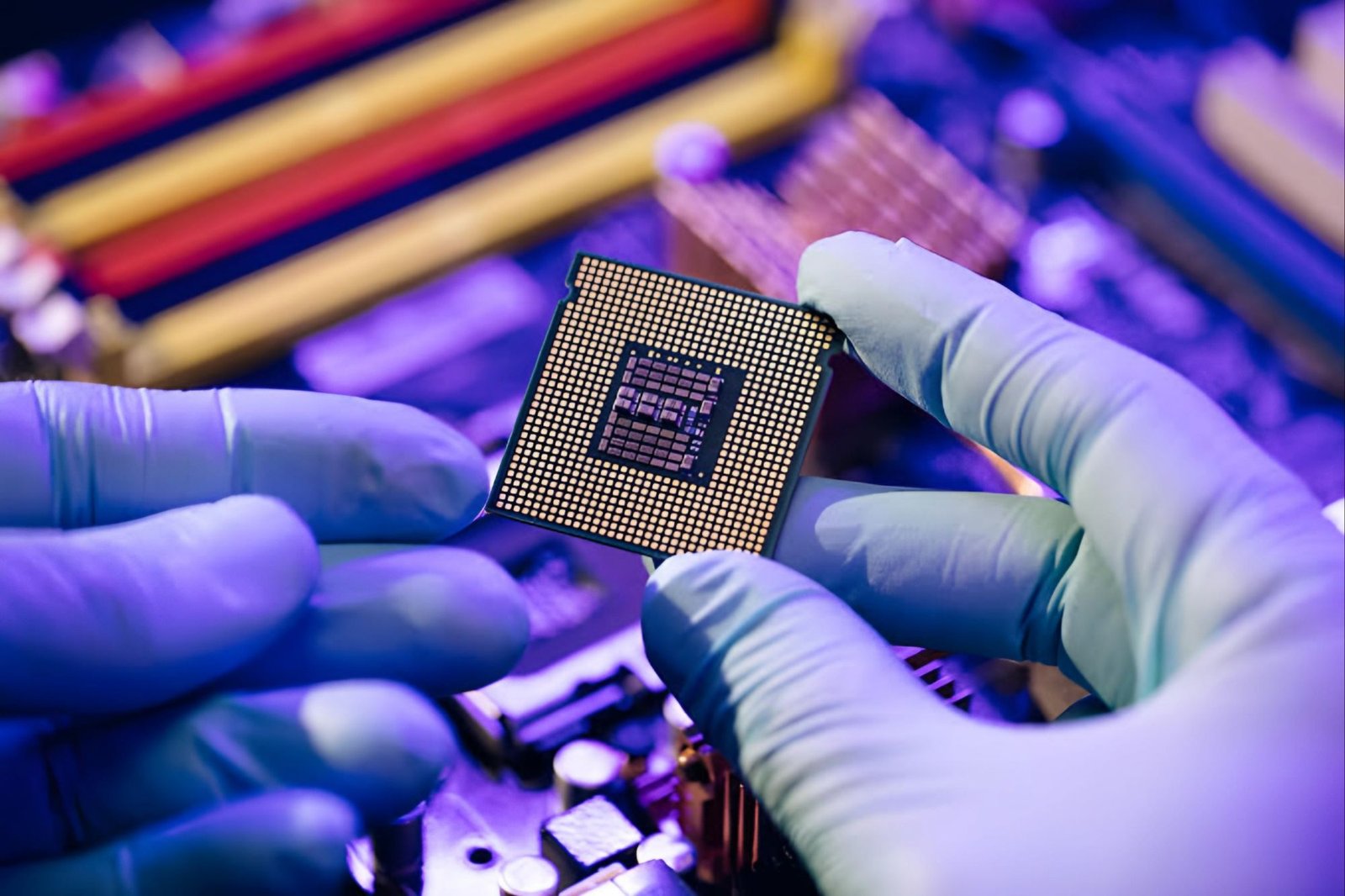
Under 100 Words: A Compact Summary
Nvidia CEO Jensen Huang revealed Blackwell chips, promising unparalleled AI performance, to sustain Nvidia’s dominance. The chips, named after David Blackwell, target data centers, aiming to diversify beyond gaming. GTC highlights include partnerships with Siemens and BYD (Next-Gen AI Chip Unveiled by Nvidia CEO).
Nvidia Corporation’s CEO, Jensen Huang, unveiled novel chips intended to prolong his firm’s supremacy in artificial intelligence computing, a realm where it currently holds the distinction of being the world’s third most valuable entity (Next-Gen AI Chip Unveiled by Nvidia CEO).
A freshly engineered processor blueprint dubbed Blackwell boasts multiple-fold swiftness in handling the fundamental models governing AI, as disclosed by the company during its GTC conference in San Jose, California. This encompasses the intricate process of technology development, known as training, as well as its execution, termed inference.
Comprising a staggering 208 billion transistors, the Blackwell chips will serve as the foundation for upcoming computing systems and related products deployed by major data center operators worldwide—among them Amazon.com Inc., Microsoft Corp., Alphabet Inc.’s Google, and Oracle Corp. Nvidia has slated the availability of Blackwell-based products for later this year.
Named in homage to David Blackwell, the inaugural Black scholar admitted into the National Academy of Science, Blackwell faces the formidable task of following in the footsteps of its predecessor, Hopper (Next-Gen AI Chip Unveiled by Nvidia CEO). The latter propelled Nvidia’s sales to meteoric heights by pioneering AI accelerator chips. Among this lineup, the flagship H100 product has emerged as one of the most coveted commodities in the technology sphere, commanding tens of thousands of dollars per chip.
This growth trajectory has propelled Nvidia’s valuation to unprecedented levels. It stands as the first chip manufacturer to achieve a market capitalization exceeding $2 trillion, trailing only behind Microsoft Corp. and Apple Inc. overall.
The unveiling of the new chips had been widely anticipated, with Nvidia’s stock witnessing a 79% surge year-to-date up to Monday’s close. Consequently, it proved challenging for the presentation’s intricacies to captivate investors, leading to a modest 1% decline in share value during extended trading.
Huang, Nvidia’s co-founder, emphasized AI’s pivotal role in driving a fundamental economic transformation, asserting that Blackwell chips represent “the engine to power this new industrial revolution.” At Monday’s conference, the company’s first in-person event since the onset of the pandemic, he remarked, “Working with the most dynamic companies in the world, we will realize the promise of AI for every industry.”
The novel design boasts an abundance of transistors—those diminutive switches endowing semiconductors with data storage and processing capabilities—exceeding conventional production limits (Next-Gen AI Chip Unveiled by Nvidia CEO). It comprises two chips conjoined through a connection ensuring seamless operation as a unified entity, the company clarified. Taiwan Semiconductor Manufacturing Co., Nvidia’s manufacturing partner, will employ its 4NP technique for production (Next-Gen AI Chip Unveiled by Nvidia CEO).

Blackwell also features enhanced interconnectivity with other chips and a novel method for expediting AI-related data processing. It constitutes a component of the company’s upcoming “superchip” lineup, integrated with Nvidia’s central processing unit, Grace (Next-Gen AI Chip Unveiled by Nvidia CEO). Users will have the option to pair these products with new networking chips—one adopting a proprietary InfiniBand standard, while the other relies on the more prevalent Ethernet protocol. Nvidia also plans to update its HGX server machines with the new chip.
Initially renowned for its graphics cards catering to computer gaming enthusiasts, Nvidia’s graphics processing units (GPUs) found success across diverse domains due to their ability to parcel out calculations into numerous simpler tasks and execute them concurrently (Next-Gen AI Chip Unveiled by Nvidia CEO). This technology is now transitioning to more intricate, multistage tasks predicated on burgeoning datasets.
Blackwell is poised to propel this transition beyond rudimentary AI functions such as speech recognition or image creation (Next-Gen AI Chip Unveiled by Nvidia CEO). This entails tasks of heightened complexity, potentially encompassing the generation of three-dimensional video content through verbal commands, leveraging models with up to 1 trillion parameters.
Despite its remarkable achievements, Nvidia’s revenue has become heavily reliant on a handful of cloud computing behemoths: Amazon, Microsoft, Google, and Meta Platforms Inc (Next-Gen AI Chip Unveiled by Nvidia CEO). These entities are investing heavily in data centers, striving to outpace rivals with innovative AI-driven services.
The challenge confronting Nvidia lies in diversifying its technology offerings to appeal to a broader customer base (Next-Gen AI Chip Unveiled by Nvidia CEO). Huang aims to achieve this by facilitating the implementation of AI systems by corporations and governments through integrated software, hardware, and services.
Huang’s address heralds the commencement of a four-day GTC event often dubbed a “Woodstock” for AI developers. Below are some noteworthy highlights from the presentation:
- Nvidia’s Omniverse software and services, facilitating the creation of digital replicas of real-world entities, will be compatible with Apple’s Vision Pro headset. Images and videos transmitted from Nvidia data centers will enhance users’ immersive experiences.
- Siemens AG has seamlessly integrated Omniverse into its Xcelerator industrial design software. Shipbuilder HD Hyundai will leverage this technology to streamline vessel construction by first assembling complete ships virtually.
- Chinese electric vehicle manufacturer BYD Co. has opted for Nvidia chips, software, and services across its operations. This encompasses employing Nvidia technology for vehicle brain systems, design processes, and factory robotics. Omniverse will also aid car buyers in customizing their vehicles.
- Project Groot, featuring a novel computer based on Blackwell, is being tailored for humanoid robot manufacturers. This innovation will enable robots to comprehend natural language and mimic human movements through observation—a challenge Huang deems “one of the most exciting problems to solve in AI today.”
- Johnson & Johnson is harnessing Nvidia technology to expedite the development of AI-driven software enhancing surgical analytics.
Concluding the event, Huang was joined on stage by two robots, trained utilizing Nvidia’s simulation tools. He remarked, “Everything that moves in the future will be robotic.”
ALSO READ – SoftBank Founder Masayoshi Son Eyes Massive Investment in $100 Billion AI Chip Venture.